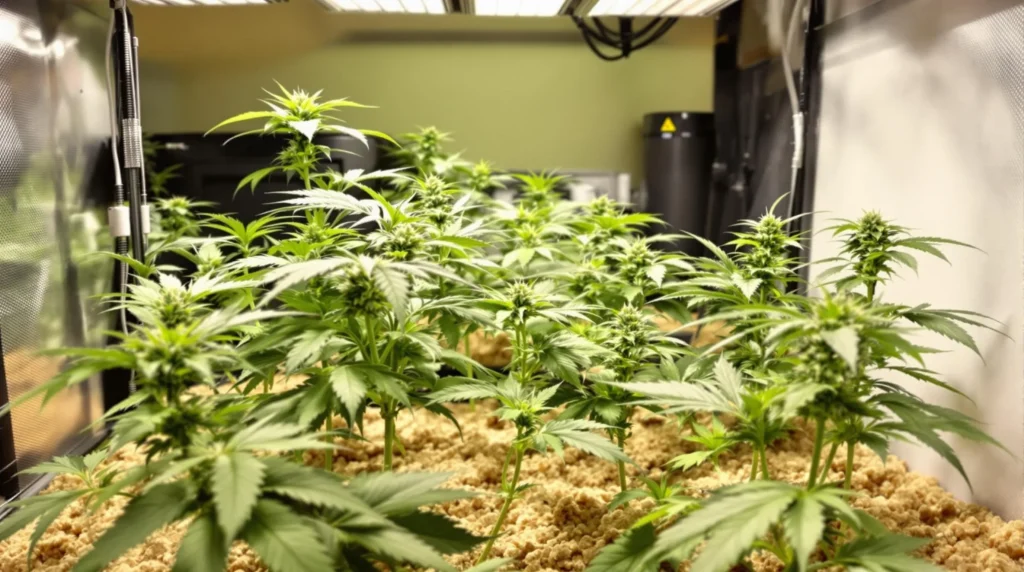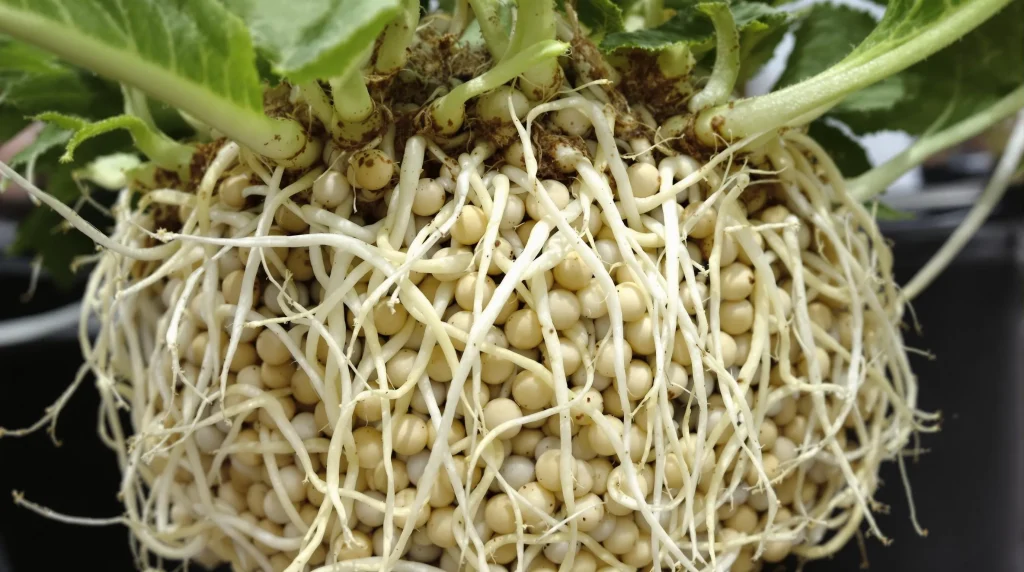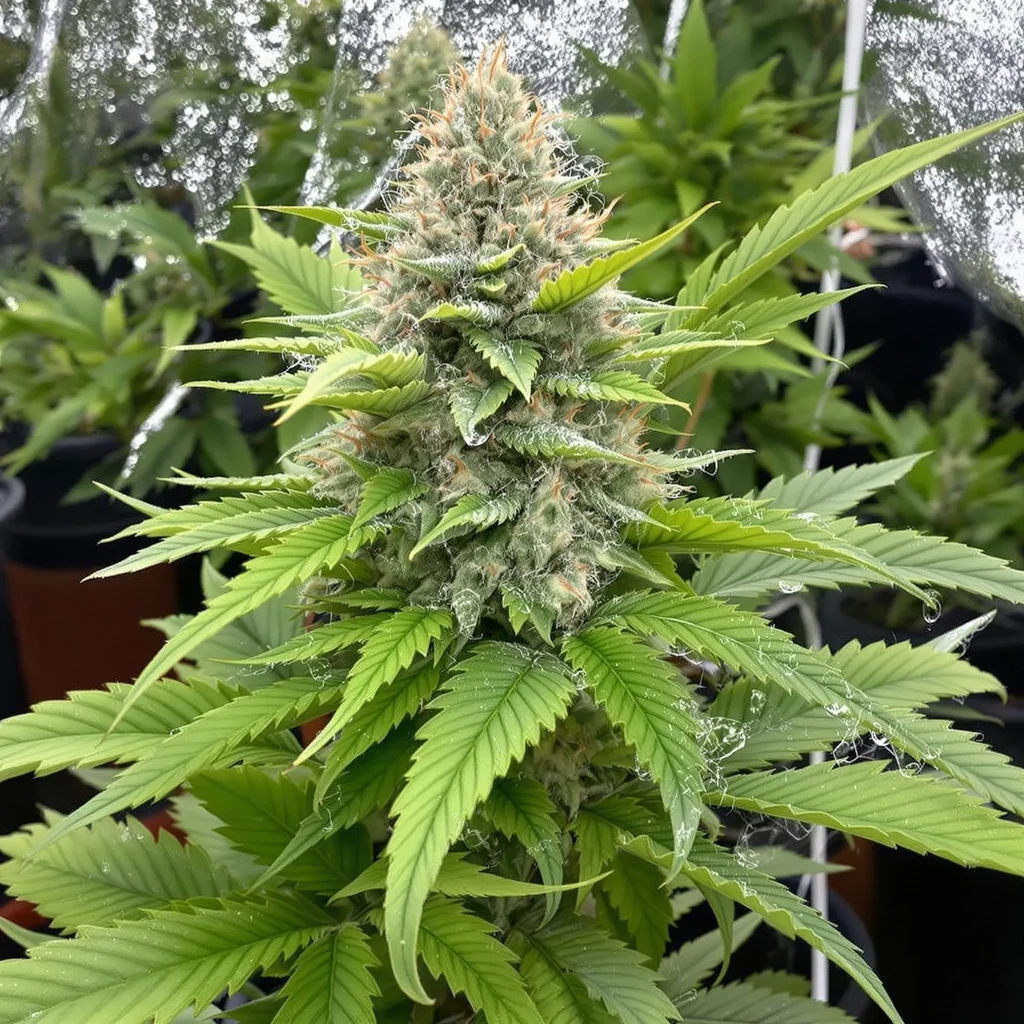Imagine unlocking the full potential of your cannabis plants, achieving robust growth and bountiful yields. The secret lies beneath the surface, in the growing medium you choose. Selecting the best growing medium for cannabis is crucial, as it directly impacts plant health, growth rate, and overall yield. This comprehensive guide explores various growing mediums, their benefits, and how to choose the right one for your cannabis cultivation needs. With an informed choice, you can create the perfect environment for your plants to thrive.
What Is a Growing Medium?
A growing medium is the material in which cannabis plants develop their root systems. It provides support, nutrients, water, and oxygen to the roots, all essential for healthy plant growth. The choice of medium influences factors like water retention, drainage, and nutrient availability, making it a critical decision for any cultivator. Whether you’re a beginner or an expert grower, knowing the function of the medium is fundamental to success.
Definition and Purpose of Growing Mediums
Growing mediums serve as the foundation for cannabis plants, anchoring roots and facilitating the uptake of water and nutrients. They also play a role in oxygen exchange, vital for root respiration and overall plant vitality. The medium you choose determines how well your plants can absorb essential elements and how resilient they are to environmental challenges.
Selecting the right growing medium sets the stage for a healthy, thriving plant. With the right foundation, your cannabis plants are better equipped to resist stress, grow robustly, and produce higher yields. Discover our guide on the best high yield strains. This makes the best growing medium for cannabis one of the most critical decisions for successful cultivation.
How the Right Medium Affects Cannabis Growth
Choosing an appropriate growing medium affects several key factors:
- Water Retention and Drainage: Ensuring roots receive adequate moisture without becoming waterlogged is essential for preventing root diseases and promoting healthy growth.
- Nutrient Availability: Providing essential nutrients in accessible forms ensures consistent development and prevents deficiencies.
An optimal medium also influences:
- pH Levels: Maintaining an ideal pH allows for efficient nutrient uptake and reduces the risk of imbalances.
- Root Aeration: Allowing sufficient oxygen to reach the roots promotes healthy respiration, critical for growth and energy production.
Balancing these elements allows your plants to thrive in any environment, optimizing growth and yield potential. Selecting the best growing medium for cannabis ensures these factors are effectively managed.
Factors to Consider When Choosing a Growing Medium
Water Retention and Drainage
A growing medium should retain enough water to keep the roots hydrated while allowing excess moisture to drain away. Poor drainage can lead to waterlogging, which suffocates roots and encourages diseases like root rot. Mediums with good drainage support healthier root systems and faster growth.
Equally important is the medium’s ability to distribute water evenly. Uneven water retention can create dry spots in the root zone, leading to stress and uneven plant development. A well-balanced medium ensures consistent hydration throughout. A well-balanced medium ensures consistent hydration throughout and makes for the best growing medium for cannabis.
Nutrient Availability
The nutrient profile of a growing medium determines how well it can support plant growth. Some mediums, like soil, naturally contain essential nutrients, reducing the need for immediate fertilization. Others, like coco coir, are inert and require external feeding. Knowing your medium’s nutrient properties helps you create a feeding schedule tailored to your plants’ needs. This ensures optimal growth while preventing overfeeding or nutrient burn, which can harm plant health.
pH Balance and Adjustability
Cannabis plants thrive in a pH range of 6.0 to 7.0 in soil and 5.5 to 6.5 in soilless mediums. A medium with a stable pH supports better nutrient uptake, minimizing the risk of deficiencies. Regular testing with pH meters is essential to maintain this balance. If your medium’s pH drifts outside the ideal range, adjustments are necessary. Choosing a medium that responds well to pH corrections simplifies this process, ensuring your plants remain healthy and productive. Choosing the best growing medium for cannabis involves considering its nutrient-holding capacity.
Growing Environment (Indoor vs. Outdoor)
The cultivation environment plays a significant role in medium selection. Indoor growers often prefer soilless options like coco coir or hydroponics for their controllability and cleanliness. These mediums allow precise management of nutrients, light, and temperature.
Outdoor growers may lean toward soil for its natural nutrient content and ability to buffer environmental changes. The choice should align with your specific setup and cultivation goals to achieve the best results. The best growing medium for cannabis will maintain an ideal pH with minimal intervention.

Types of Growing Mediums for Cannabis
Various growing mediums are available, each with distinct characteristics. Choosing the right one depends on your experience, resources, and the specific needs of your cannabis plants.
Soil
Soil is a traditional and widely used growing medium, especially favored by beginners for its natural composition and ease of use. Its organic nature makes it highly adaptable to different cultivation styles and environments.
Benefits of Using Soil for Cannabis Cultivation
Soil offers several advantages for cannabis cultivation:
- Nutrient-Rich: High-quality soils contain essential nutrients, reducing the need for immediate fertilization and creating a forgiving environment for beginners.
- Microbial Life: Healthy soil supports beneficial microorganisms that enhance nutrient uptake and protect against harmful pathogens.
Additionally, soil provides:
- Buffering Capacity: Its natural ability to buffer pH fluctuations and nutrient imbalances makes soil an ideal choice for growers seeking a low-maintenance medium.
- Improved Flavor: Many growers believe soil-grown cannabis produces richer, more complex terpene profiles, enhancing the flavor and aroma of the final product.
Best Types of Soil Mixes for Cannabis
The best soil mixes are well-draining and retain adequate moisture. A recommended mix includes:
- Loam Soil: A balanced mix of sand, silt, and clay provides optimal drainage and nutrient retention.
- Organic Matter: Compost or worm castings enrich the soil with essential nutrients and beneficial microbes.
Amendments like perlite or vermiculite improve aeration and drainage, ensuring the soil remains loose and easy for roots to penetrate.
Organic vs. Non-Organic Soil
- Organic Soil: Made from natural materials, it promotes sustainable cultivation and superior flavor profiles. Organic soils are free from synthetic chemicals, making them ideal for environmentally conscious growers.
- Non-Organic Soil: May contain synthetic fertilizers and pesticides, offering faster nutrient availability but potentially impacting flavor and environmental health. This type of soil suits growers prioritizing convenience and rapid growth.
Coco Coir
Coco coir, derived from coconut husks, is a popular soilless medium known for its excellent water retention and aeration properties. Its versatility has made it a favorite among both novice and experienced growers.
Advantages of Coco Coir as a Growing Medium
Coco coir offers numerous benefits:
- Sustainability: As a renewable resource, coco coir is an eco-friendly alternative to peat moss.
- Aeration: Promotes healthy root development through improved oxygenation, reducing the risk of root rot.
It also excels in:
- Water Retention: Holding moisture effectively, coco coir minimizes the frequency of watering while ensuring consistent hydration.
- Customizability: It pairs well with amendments like perlite for enhanced drainage and aeration, making it highly adaptable.
How to Prepare and Use Coco Coir
- Hydration: Soak dry coco coir bricks in water to expand them.
- Rinsing: Rinse thoroughly to remove salts that could harm plant growth.
- Buffering: Soak in a calcium-magnesium solution to improve nutrient uptake.
- Mixing: Combine with perlite (70% coco coir to 30% perlite) to optimize drainage.
- Planting: Fill containers with the prepared mix and plant your seeds or clones, ensuring proper spacing.
These steps ensure coco coir lives up to its potential as the best growing medium for cannabis in soilless setups.
Common Mistakes to Avoid with Coco Coir
- Overwatering: Although coco coir drains well, excessive watering can still lead to moisture-related issues.
- Nutrient Deficiencies: Regular feeding with a balanced nutrient solution is necessary, as coco coir lacks inherent nutrients.
Proper preparation and maintenance are essential for maximizing coco coir’s benefits and ensuring healthy cannabis growth.
Hydroponics
Hydroponic systems grow plants without soil, using nutrient-rich water solutions. This method offers precise control over growing conditions, making it ideal for experienced cultivators seeking higher yields and faster growth.
What Is Hydroponic Growing?
Hydroponic cultivation suspends plant roots in a water-based nutrient solution. Inert mediums like clay pellets or rockwool support the plants, allowing for efficient nutrient delivery without soil.
Hydroponics eliminates soil-borne pests and diseases while enabling growers to tailor every aspect of the growing environment, from nutrient levels to oxygen availability.
Popular Hydroponic Mediums
- Clay Pellets: Provide excellent aeration and stability for roots.
- Rockwool: Retains water effectively, making it ideal for drip systems.
Hydroponics allows for creative customization of setups, catering to the specific needs of cannabis plants and maximizing their potential.
Pros and Cons of Hydroponics for Cannabis
- Pros:
- Faster growth due to direct nutrient delivery.
- Reduced risk of pests and soil-related diseases.
- Efficient water use and higher yields.
- Cons:
- Higher setup and maintenance costs.
- Requires precise monitoring of pH and nutrients.
Choosing the Right Medium for Your Cannabis Strain
Matching Medium to Strain Characteristics
Indica strains prefer nutrient-rich, stable environments like soil. Sativas thrive in well-draining mediums like coco coir, while hybrids adapt well to either, depending on their traits. Choosing the right medium ensures optimal performance for each strain type.
Adapting Mediums for Indoor vs. Outdoor Cultivation
- Indoor: Soilless mediums like coco coir or hydroponics offer precise control over conditions.
- Outdoor: Soil is ideal for its natural

FAQs About Growing Mediums
What is the best growing medium for beginners?
For beginners, soil is often considered the best growing medium for cannabis. High-quality organic soil comes preloaded with essential nutrients, reducing the need for complex feeding schedules. It also provides a forgiving environment for those still learning about pH management and watering techniques.
Can I reuse my growing medium?
Yes, many growing mediums can be reused with proper care. Soil can be reconditioned by adding compost or organic amendments to restore its nutrient profile. Coco coir should be rinsed and buffered to remove salt buildup before reuse, ensuring it remains a healthy environment for roots. Ensuring these reused mediums remain effective makes them candidates for the best growing medium for cannabis in sustainable cultivation.
How do I maintain the pH of my growing medium?
Maintaining the pH of your growing medium involves regular testing with reliable pH meters or testing kits. If the pH is too high or low, use pH up or pH down solutions to bring it back to the ideal range. For soil, the optimal pH is between 6.0 and 7.0, while soilless mediums like coco coir and hydroponics thrive in a range of 5.5 to 6.5. Choosing a stable and adjustable medium ensures it functions as the best growing medium for cannabis.

